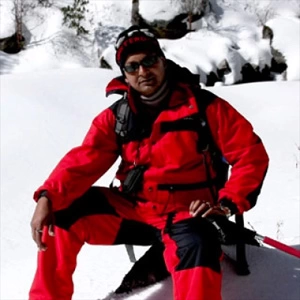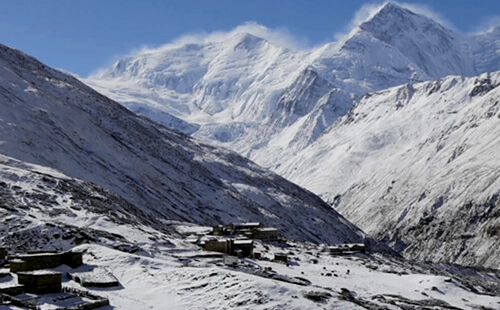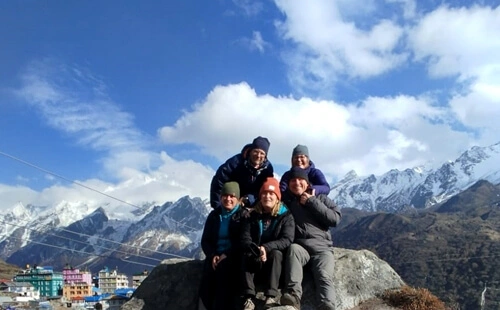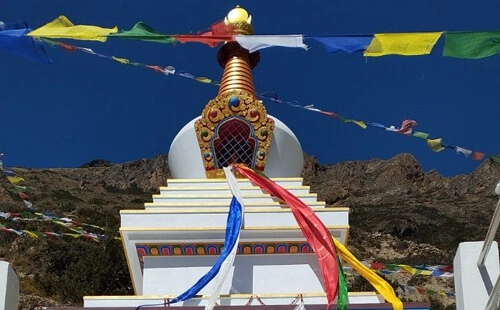Where is Langtang Valley in Nepal? Getting into the Langtang Trek Altitude
Langtang Valley, offering incredible Himalayan highlights such as mind-blowing mountain scenery, vibrant local culture, and a manageable trekking challenge, is nestled in Nepal’s central Himalayan region. Only a 7-8 hour drive from the capital city, the Kathmandu Valley, and you are already at the common Langtang Valley Trekking starting point, Syabrubesi. The drive, covering about 122 km in distance, is joyous, and the elevation changes on the Langtang Trail start from approximately 1,440 m.
Through the Langtang National Park, the first famous Himalayan National Park of Nepal, trekkers are offered a serene nature excursion. Wide ranges of wildlife in the natural habitats on fortunate days, such as red pandas, Himalayan black bears, musk deer, and Himalayan tahr, and on extremely lucky days, even the majestic snow leopard, as the Langtang National Park elevation ranges from 1,000 m to 7,245 m. The Langtang Trek also acts as an amazing opportunity for wildlife enthusiasts and nature lovers.
How long is the Langtang Trek? Can you add extra days?
The Langtang trek duration is also a topic of variation. Based on the specific route trekkers choose, such as the Langtang Valley Trek, Langtang Gosaikunda Trek, Helambu Trek, Tamang Heritage Trek, or trails extending up to Ganesh Himal Singla Pass and Jugal Himal Pachpokhari, the Langtang Trek distance and duration covered can vary. If you are following the standard itinerary, it typically covers 60 to 70 km and spans 7 to 10 days, with Kyanjin Gompa (3,870 m) above sea level being the highest altitude on the Langtang Trek.
Yes, if you prefer, trekkers can add extra days for a side trip to nearby high-altitude peaks such as Kyanjin Ri, Tsergo Ri, and Langshisa Kharka. Or, you can choose to extend the trek to Gosaikunda Lake, Helambu, Tamang Heritage Trail, or higher Himalayan adventures. It enriches the trekking experiences, and the extra cost, distance, and extended Langtang Trek duration are natural occurrences. The Langtang Trek height also differs.
What is the highest Langtang Trek elevation gain?
The highest Nepal Langtang Trekking Altitude specifically, though, can vary with the Langtang trip you have chosen yourself in the years 2025 and 2026; the normal Langtang Valley Trek’s highest point reached is Kyanjin Gompa at an altitude of 3,870 m. If time and health allow, side trips to Kyanjin Ri (4,773 m), Tserko Ri (4,984 m), or both become the ultimate Nepal Langtang Trekking altitude. At this point, the Langtang Trek altitude gets challenging yet manageable.
Though these peaks are not technical, they demand a good level of physical and mental preparation. The risk of acute mountain sickness (AMS) is still there; therefore, hiking up to Kyanjin Ri and Tsergo Ri and returning to the village for the night is a must. It aids in acclimatization and also fosters a deep sense of achievement, standing at high altitude amidst Langtang Lirung, Dorje Lakpa, and surrounding mountain ranges, viewing green valleys below—all the elevation changes on the Langtang trail become worth a shot here.
Which are the Langtang Trek Altitude areas prone to altitude sickness? Recognize the symptoms
In general, the Himalayan areas 3,000 m above sea level, such as during the Everest Base Camp Trek, the Annapurna Base Camp Trek, and the Mardi Himal Base Camp Trek, without proper acclimatization, carry the risk of seeing the symptoms of acute mountain sickness (AMS). It is one of the major concerns of trekkers hiking to the Himalayan regions of Nepal, regardless of one’s age and experience level. Trekkers see symptoms ranging from nausea, dizziness, loss of appetite, and problems sleeping to serious HAPE and HACE.
These are the high-altitude cerebral edema (HAPE) and high-altitude pulmonary edema (HACE), which can be fatal if not taken care of on time. Therefore, proper acclimatization is a must to make it successful, even through the altitude on the Langtang Trek. The safe altitude trekking tips, including for trekking to the Langtang Valley to avoid altitude sickness that is likely to affect you in and around Kyanjin Gompa, Kyanjin Gompa, and Tsergo Ri, are to eat healthy, keep yourself hydrated, pack appropriately, and most importantly, never skip acclimatization.
Why is high-quality trekking gear and equipment a must for the Langtang Trek Altitude?
Though the Langtang Valley trekking trails, in comparison to extremely high-altitude routes, are moderate-altitude treks in Nepal, facilitating well-trodden paths dotted with comfortable teahouses, lodges, and guest houses even after the devastating earthquake of 2015, showcasing extraordinary resilience, they are not without the inherent risks of alpine rambling in Nepal. There is still exposure to the arduous high alpine environments, such as rugged terrain, steep ascents and descents, and unpredictable Himalayan weather.
It intensifies with the increased altitude and remoteness of the Langtang trekking trails; that is why good quality trekking gear and equipment for elevation changes on the Langtang trail are a must. Layer clothing, sturdy trekking boots, a backpack, hiking poles, and for colder nights, an extra sleeping bag and down jackets, and pairs of thin and thick socks. These gears and equipment enhance comfort and stamina. For good mobility and facing the Himalayan weather challenges, including altitude, on the Langtang Trek, trekking gear and equipment are crucial.
When is the best time to do the Langtang Trek with regard to altitude acclimatization?
The Langtang Trek, especially in terms of altitude acclimatization, is best during the spring (March to May) and autumn (September to November). It is due to favorable weather, clear skies, and mild temperatures that the Langtang Valley Trekking itinerary during these months, including in the years from Adventure Himalayan Travels and Treks, ensures fixed departure. The logistical challenges as compared to those during monsoon and winter are fewer, and so are changes in itinerary, allowing for a safer and smoother experience.
Langtang Valley in winter is cold, especially in higher altitudes, and at night temperatures can get freezing, and snowfall often blocks the trekking trail. In monsoon, frequent rainfall and muddy and slippery hiking paths are normal encounters, and all these can cause alterations in the acclimatization process. While manageable with appropriate packing, preparation, and guidance from professionals for a smoother embarkation through the elevation changes on the Langtang trail, it is good to book your Langtang hike in spring or autumn.
Do you need hardcore physical training to overcome the Langtang Trek altitude?
Unlike high-altitude treks in Nepal, to overcome altitude on the Langtang Trek, although it may not require hardcore training, trekkers must be physically fit and have made up their mind for the rugged and remote conditions of the Himalayan region. While there is no technical climbing, Langtang treks in general include long walking days, gradual elevation gain, and rocky terrain, especially on the way to the summit of Tserko Ri at nearly 5,000 m; the fitter the trekkers are, the more enjoyable the Himalayan venture gets.
Therefore, if you are planning to make it safely through the Langtang Trek Elevation Gain, it is good to involve yourself in basic cardiovascular fitness, strengthening exercises, and stamina-building activities. Start a month before the trip officially begins, or at the very least, you could continue daily walking, jogging, and hiking on locally available trekking trails. However, if you are someone with heart, lung, or knee issues, it is good to consult with the concerned authorities at first and then decide whether the Langtang trek is for you or not.
How do professional guides help with the Nepal Langtang Trekking Altitude?
Professional guides licensed by the government of Nepal with several years of experience, such as those from Adventure Himalayan Travels and Treks, are the backbone of high-altitude Himalayan trekking and climbing, including for Nepal Langtang Trekking Altitude. Besides navigating the tough terrain for you and managing the essential trekking logistics, they also share safe altitude trekking tips and provide hydration strategies and nutrition advice.
An experienced local mountain guide monitors the Himalayan weather, known for its notoriously unpredictable nature. In emergencies that could arise with the elevation changes on the Langtang trail and having to arrange emergency evacuation, such as helicopter rescue, guides provide immediate assistance. Trained for high-altitude adventure with first aid, their extensive knowledge of trail, weather, and elevation profiles ensures you a safe pace and allows them to adjust the itinerary as required.
Must you get travel insurance for a trek to Langtang Valley in Nepal?
Yes, though not mandatory, such as getting relative permits for trekking and climbing in Nepal and its Langtang Valley, including guides, followed by banning solo trekkers in the country's national park, conservation area, and restricted area, comprehensive travel insurance ensures trekkers' financial protection, allowing a more immersive trekking experience. A moderate-altitude trek in Nepal, the highest point on the Langtang trek is almost 5,000 m and is not without the inherent risks of high-altitude trekking.
The journey is through the remote and rugged Himalayan landscape, where modern amenities and health facilities are limited. Hence, the travel insurance covering Langtang Trek Altitude, including medical support and emergency helicopter rescue, is a must for better peace of mind. Make sure it includes coverage for loss or theft of goods, flight and trip cancellation and delays, accidents, and injuries.
Can beginners make it successfully through the Langtang Trek Elevation Gain?
Yes, the Langtang National Park elevation range where the hiking for Langtang Valley progresses through is, in fact, one of the best beginner, family, and budget-friendly choices. Regarded as one of the moderately challenging Himalayan trekking trails, the Langtang Trek is rewarding for all who are trained for long and arduous high-altitude trekking challenges in Nepal, whether you are a beginner or a seasoned trekker. With professional guides and porters, the Langtang Valley Trek is a haven for trekkers.
Proper physical readiness, mental resilience, and guidance from professionals in the field with several years of experience in leading adventure lovers to their destination, Langtang Valley in Nepal, for those stepping into the world of Himalayan adventure for the first time, is a treasure trove. Porters lift a heavy weight from your shoulder, so you save energy and fully invest yourself in enjoying what the journey has to offer, as well as promote responsible and eco-friendly tourism.
Conclusion
The Nepal Langtang Trekking Altitude takes you to some of the most unique and breathtaking heights. Reaching the highest point nearly 5,000 m above sea level (that is, only if you prefer a side hike up to Tsergo Ri), the Langtang trek is an excellent route for an easygoing Himalayan holiday experience in Nepal. Without the technical dangers and demands of the highest expeditions, the Langtang Trek height rewards you with unparalleled cultural insights, alpine meadows, and a serene sense of achievement.
Contact us now and reserve your seat for 2025 and 2026. We are offering group and early-bird booking discounts on our comprehensive trekking package and its services. You may also choose to hire our guides and porters only, guaranteeing a hassle-free experience. Our package cost covers you for arranging meals, lodging, transportation, permits, guides, and their daily necessities during the trekking days. Book with us confidently, where safety is paramount.




